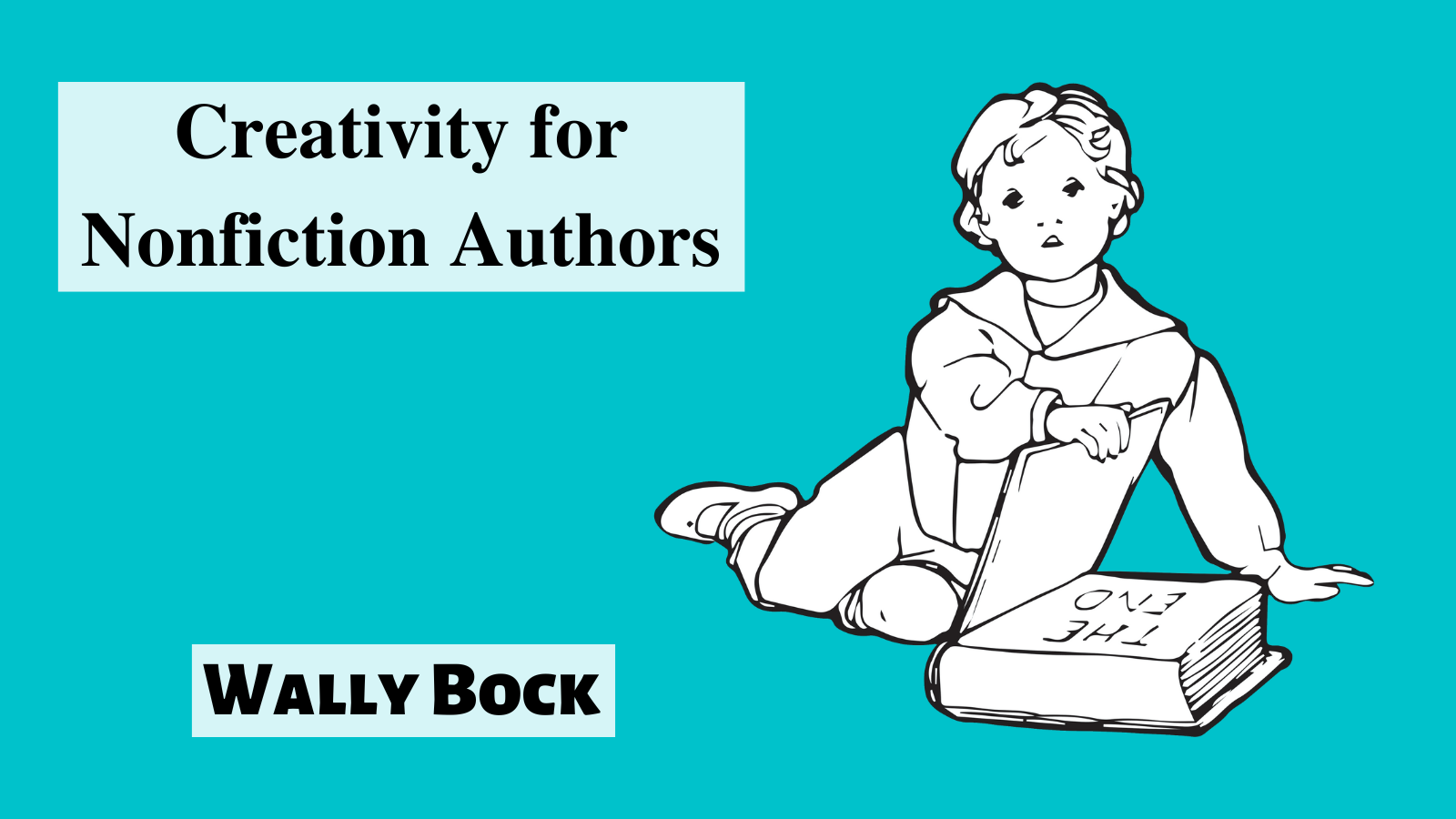If you want to write a great book, you need to be creative. “Creative nonfiction” is a style of writing where you use fiction writing techniques to make nonfiction more interesting. That’s a powerful way to make your book better. Stories are the way human beings have been sharing ideas since we first crawled out of caves.
But writing a story-rich book is not enough to make it either great or likely to sell well. For that, you need another kind of creativity. You need the creativity that gives you great ideas to enrich your content.
If you want to get great content ideas, you need to master the creativity cycle that was first outlined in a book almost 100 years ago.
The Wallas Cycle
The book was The Art of Thought, published in 1926. The author was Graham Wallas who, among other things, was one of the founders of the London School of Economics. Wallas identified a four-step cycle for developing great ideas. The Wallas cycle is a good schematic of how creativity works.
The first step is preparation. When you start thinking about your book, your research should be wide and deep. Do as much as you can to identify all the experts and differing viewpoints related to your topic. Gather as many good stories and as much research as you can. Mull it all over.
Now you’re ready for the second step. In this case, it’s a step away from rigorous focused work on your topic. Think of it as “positive procrastination.” It’s time to let go and let the Default Mode Network in your brain do some work. Focus on other things while you let your brain work in the background.
That sets you up for step three. it’s called inspiration. While you’re doing other things, your brain will come up with ideas. Some ideas will be awful. Others will be great. But all of them will disappear in a heartbeat if you don’t capture them. Make sure you always have a way to do that.
The fourth step is verification. This is where you go through your blossoming idea collection, identify potentially great ideas, and set about making them better. It takes work to turn good ideas into better ideas. The way to have great ideas is to have lots of good ideas.
Three strategies for getting more good ideas
Where do you think you’re likely to get your next kiss? Do you think it will be by going out on the street and going up to people one at a time until you get a kiss? That’s not only ineffective, it could be dangerous. If you’re like most people, you’ll get your next kiss where you got your last kiss. Good ideas work the same way.
Where did you get your last good idea? Did you get it while you were doing housework, driving, exercising, where? You’re most likely to get another good idea in a situation where you’ve gotten ideas before. And there’s good news. We know what most of those situations are like.
Look for situations where your body is engaged and your mind is free to roam. Make sure to have your idea capture tool handy. You’ll need it.
Take a walk. Walking is a situation like I just described. You don’t have to think much about how to walk, just walk. Unless you’re busy dodging traffic, your mind is free to roam. Take it from Friedrich Nietzsche, “All truly great thoughts are conceived while walking.”
The third way to get more good ideas is to borrow them. There’s a catch. It won’t do to borrow them from people who are already using them among your primary audience. Go outside your silo to look for best practices you can modify to share with your readers. If you’re writing a book about sales, for example, you might find ideas from farmers or housepainters or marine biologists that you can adopt and adapt.
Make good ideas better
If you want to make your ideas better, start by playing with them. Try combining ideas in different ways. Try writing about the ideas to see what modifications come to mind as you write.
Expose your ideas to review. Get friends and family and industry experts to take a look at your ideas and tell you what they think. Put together a panel of people like your primary reader and get feedback from them.
The quality of your ideas goes a long way toward establishing the quality of your book. Nonfiction readers and especially business readers are looking for new ideas to apply. Give them what they want by mastering the Wallas cycle, getting lots of good ideas, and turning them into great ideas.
Takeaways
The Wallas cycle is a good schematic of how creativity works.
Prepare rigorously.
Let go and let your Default Mode Network do the work.
Capture ideas when you get them. Don’t wait.
It takes work to turn good ideas into great ideas.
To get great ideas, get lots of good ideas.
Good ideas are like kisses. you’re most likely to get the next one in the same place you got the last one.
Walking is a great way to generate ideas.
Share your ideas to get feedback and suggestions for improvement.
